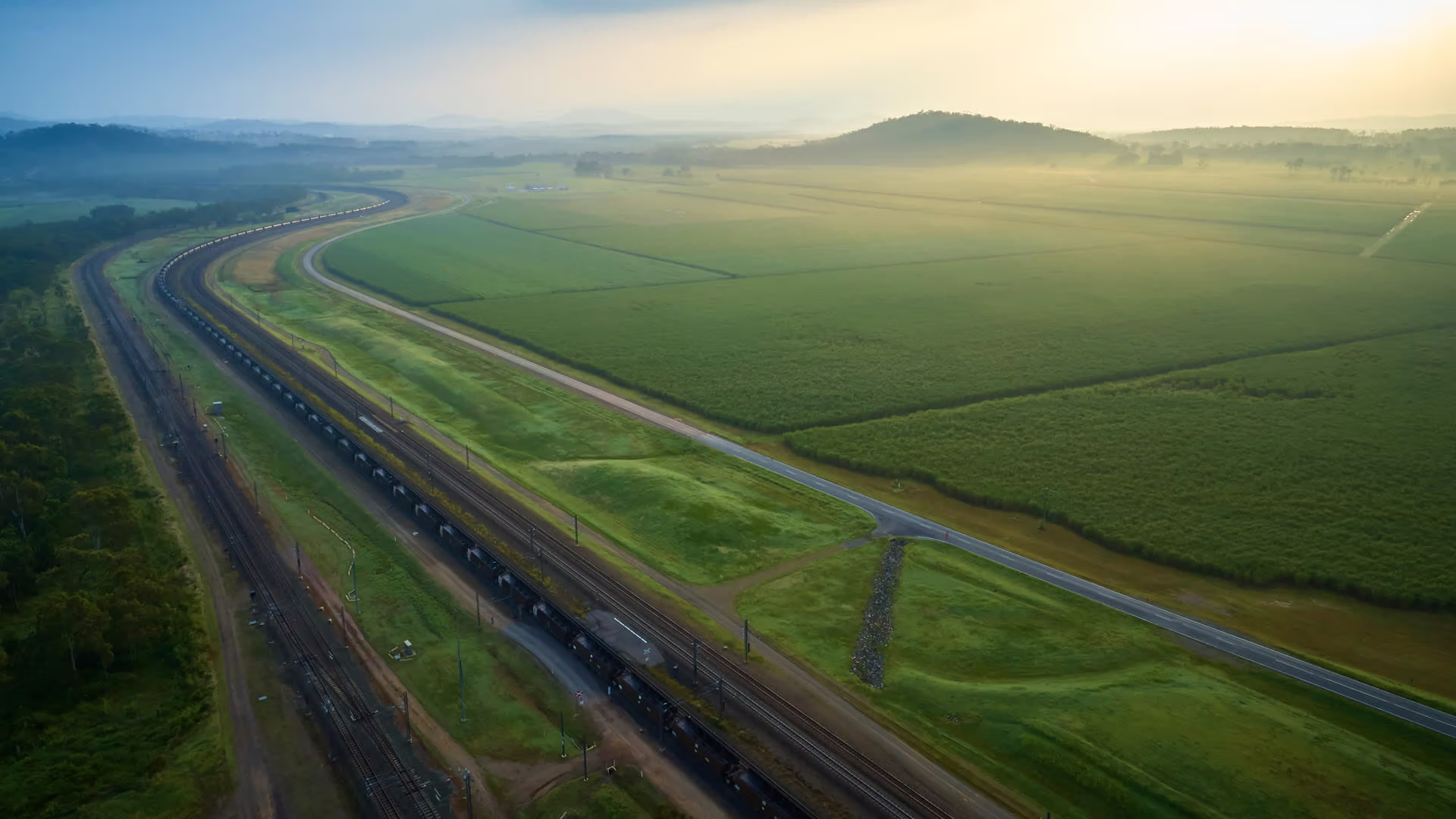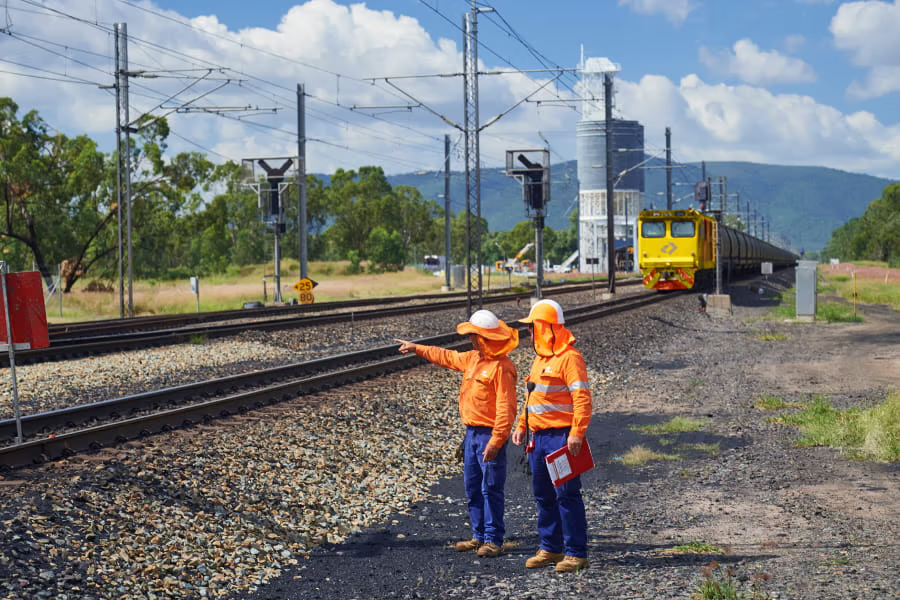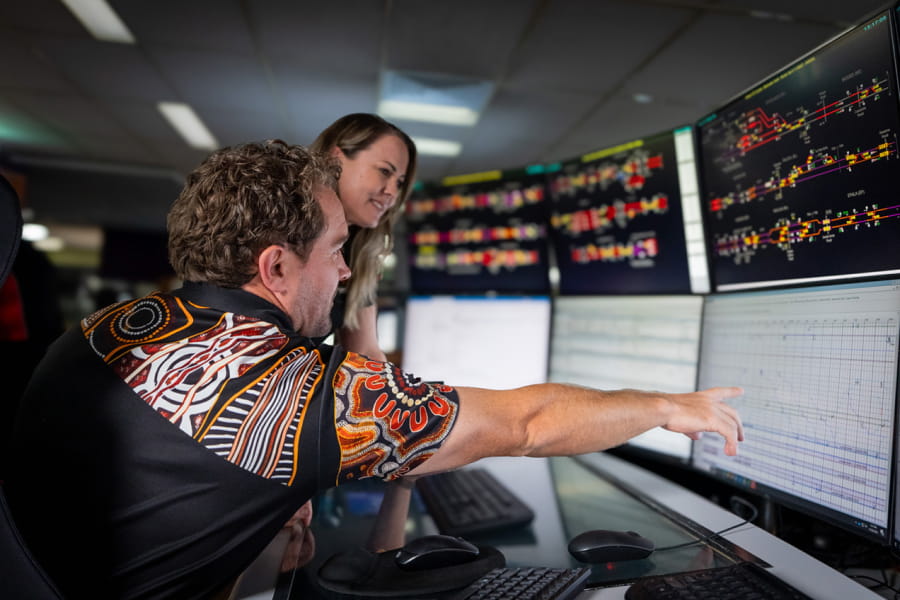
Central Queensland Coal Network
This 2,670 kilometre multi-user track network comprises four of the major coal systems and one connecting system, serving Queensland’s Bowen Basin coal region: Newlands, Goonyella, Blackwater and Moura with Goonyella Abbot Point, the connecting system link.
Connecting more than 50 mines to five major export terminals, plus many domestic consumers, the CQCN is a pivotal component to Queensland’s coal industry.
Aurizon's CQCN operations are governed by 99-year lease arrangements with the State of Queensland. Access to the rail network is managed under a detailed process approved by the competition regulator, the Queensland Competition Authority.
Access Seekers (including miners, non-coal access holders and rail operators) can seek access to the rail network through the process set out in Aurizon Network’s Access Undertaking, which defines the regime for open access to our rail infrastructure.
CQCN information
This section includes key forms, guides, reports and plans in the operations of the Central Queensland Coal Network.

Third party rail corridor access
For third parties to access Aurizon Network's rail corridor and other property, we first need to ensure appropriate safety and legal requirements are in place.
We can help with third-party requests (referred to as Wayleave) with access to the rail corridor including for temporary non-invasive activities and construction work.

Over dimensional road loads
Aurizon is committed to fostering and maintaining positive relationships with our neighbours and landholders adjacent to the rail corridor, demonstrating mutual respect and courtesy.
In the CQCN, we share common boundaries with many landholders. At times, it may be necessary to obtain permission to access their properties to maintain and operate our rail infrastructure effectively.
To this end, Aurizon has implemented a Land Access Protocol (LAP) to outline the minimum standards that Aurizon staff and contractors must adhere to when entering and accessing adjoining landholders’ properties.
The purpose of the LAP is to balance the landholder’s interests with Aurizon’s operational requirements. The LAP includes, for example:
- communication and consultation with landholders
- implementation measures to manage vegetation and erosion control
- ensuring gates, grids, and fences are left as found unless otherwise agreed with the landholder
- using appropriate access points and tracks, after consultation with landholders
- demonstrating respect for people, livestock, land and property infrastructure
- implementing measures, where necessary, for biosecurity and declared pest management in accordance with legislative obligations.

Level crossing protocol
To report livestock crossings, rail incidents, trespassers, fires, or safety concerns in the CQCN rail corridor, contact our Network Control.
For properties along the Goonyella and Newlands rail systems:
Phone: (07) 4932 0746
If your property is along the Blackwater and Moura rail systems:
Phone: (07) 4932 0745
For rail emergencies, please contact 1800 079 303.
Aurizon Central Queensland Coal Network is re-commencing operations on the Collinsville passing loop to provide more flexibility for train operations, as we seek to improve cycle times and address identified capacity shortfalls on the Newlands rail system.
For more information, download our Frequently Asked Questions (FAQs).
